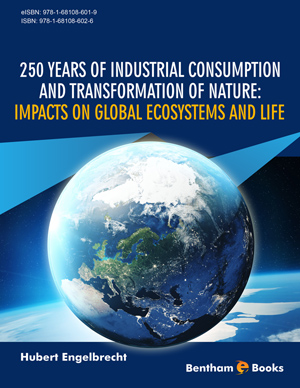Abstract
The surface waters of oceans and seas have been exposed long-term to multiple anthropogenic contaminations, waste heat, and heat transfer from the warming atmosphere. Absorption of ca. 170 GT CO2 since the beginning of industrialisation has caused on average a reduction of pH by 0.1. Between 1871 and 2005, heat transfer from the atmosphere has resulted in surface water warming of tropical seas by 0.5 °C. Fluvial input of reactive N and P from urban areas and agricultural land has caused partial deoxygenation of the sea waters. In poorly ventilated areas like the Baltic Sea and Gulf of Bengal, hypoxic and anoxic zones developed. Anoxic zones in eddies, observed in the eastern South Atlantic, alter microbial communities and, therefore, primary productivity. Decrease in Atlantic Meridional Overturning Circulation (AMOC) has occurred because of the intensified input of Arctic glacial meltwater, resulting in less storage of atmospheric CO2 in deeper sea water layers. Average Hgconcentration in the upper seawater layer increased from 0.75 pM to 1.45 pM between 1850 and 2008. Offshore hydrocarbon development, including havaries and oil spills impaired sea water quality. Littering of the seas with plastic particles has occurred since ca. 70 years ago and amounted 2010 to 8-10 MT/a. The fragments act as transport vehicles for pathogens and organotoxins. Radioactive waste was disposed of between 1946 and 1993 at 80 sites in the Atlantic, Arctic, and Pacific Oceans. The Fukushima nuclear havary effected aquatic discharge of minimum 2 × 1016 Bq into the Pacific.
Keywords: Acidification, AMOC, Anoxia, Deoxygenation, Eutrophication, Heat uptake, Meltwater, Oil spills, Plastic, Pollution, Primary production, Revelle Factor, Sea water, Sea water stratification, Thermohaline circulation, Warming.












